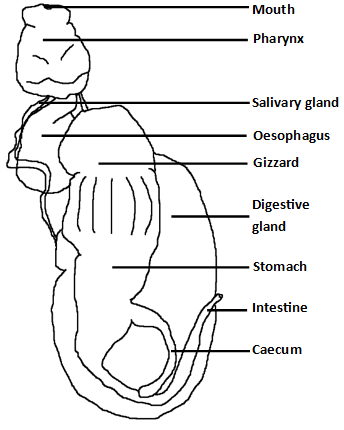Anatomy & Physiology
Locomotion
The muscular foot is used for gliding and crawling movements with the
aid of mucus (Kandel 1979). The foot is also used to grasp rocks and
coral to prevent being moved about by the waves or picked up by nosy
students. Wedge sea hares do not seem to be able to swim like Aplysia
spp. as they lack a mantle fold. Water can be expelled from the mantle
cavity through the excurrent siphon but it is unlikely they are able to
jet propel themselves (J. Kong, personal observation). Parapodia, along the side of the body in sea hares, are reduced and fused to the body so are not used in locomotion (Klussmann-Kolb 2004).
|

|
Body Plan
The skin of sea hares is covered in mucous secreting glands and the body
wall has unorganised smooth muscle fibres allowing great flexibility
(Kandel 1979). Sea hares have secondarily derived bilaterial symmetry
(Ruppert et al. 2004). Their body is laterally compressed - they are tall and skinny, not short and fat (Klussman-Kolb 2004).
This wedge sea hare on the right can touch its toes (at Heron Island, Australia 2012).
|

|
Cardio-respiratory System
Gills are situated within the mantle cavity (Rudman 1999). These gills are different to the hypothesised ancestral gill of Molluscs; the mantle forms the exchange area instead of the lamellae (Ruppert et al. 2004). The two-chambered heart located in the pericardial cavity pumps blood around the haemocoel (Kandel 1979).
Nervous System

|
Sea hares are known for their large neurons and simple nervous system,
making them model organisms for neurobiology although most studies have
been concentrated on Aplysia spp. (Kandel 1979). Kurokawa and Kuwasawa (1985) used wedge sea hares to investigate the ganglion of the gills. The body is detorted during development as evident by the parallel ganglions in the nervous system (see left, nervous system of Dolabella sp., adapted from Hoffman 1939).
|
Shell
 |
Wedge sea hares have a reduced and internalised shell located inside their posterior shield (Klussmann-Kolb 2004).
A shell from Manila Bay, Philippines was 32.2mm x 23.5mm, shells have a thickly calcified, incurved tip tapering into a wider, thinner plate (See left, adapted from Springsteen and Leobrera 1986) |
Sensory System
The osphradium in the mantle cavity and the rhinopores detect chemicals in the water (Kandel 1979, Croll 1983). The head region, especially the oral lobes and anterior tentacles are sensitive to food stimulation which aids in food detection (Preston and Lee 1973). The eyes consist of a spherical lens with a retina (Kandel 1979). Sea hares have mechanoreceptors on their skin which detect stimuli and induce a withdrawal response (Kandel 1979).
Digestive System

|
The digestive system can be distinguished into three parts: the foregut,
midgut and hindgut (See left, adapted from Klussmann-Kolb 2004). Food
is passed down the digestive system by cilia and mucus (Kandel 1979).
The foregut consisting of the mouth and pharynx have two
salivary glands that open into it, it also houses the buccal mass which
is protruded during feeding (Kandel 1979).
The midgut consists of the short oesophagus and the gizzard.
The gizzard contains teeth to break down food (Kandel 1979).
The hindgut consists of the intestine and anus. Fluid from
the gizzard is collected in the stomach (Kandel 1979). Faeces are passed as pellets
(see below). |
"That wasn't me". Dolabella auricularia with faecal pellet at Heron Island, Australia 2012.
|
Reproductive System

|
Left: the reproductive system of Aplysia california, representing the general Aplysiidae reproduction system (Adapted from Kandel 1979).
A muscular penis is located between the right rhinopores and the
anterior tentacles; it is supplied by a seminal groove along the body
from the mantle cavity (Klussmann-Kolb 2004).
1. Fertilisation is internal
2. An egg mass is laid
3. A trochophore larva is formed
4. The trochophore larva metamorphoses into a veliger larva
5. The veliger larva becomes a juvenile sea hare
6. The juvenile sea hare becomes an adult sea hare
(Kandel 1979, Ruppert et al. 2004) |
Glossary (Ruppert et al. 2004)
Parapodia: Extensions of the foot on the side of the body for swimming.
Lamellae: The site of gas exchange in the gills, located on the gill filaments.
Detorsion: The reversal of the process of torsion (twisting of the body) during development. Torsion is a unique characteristic of all Gastropods. |